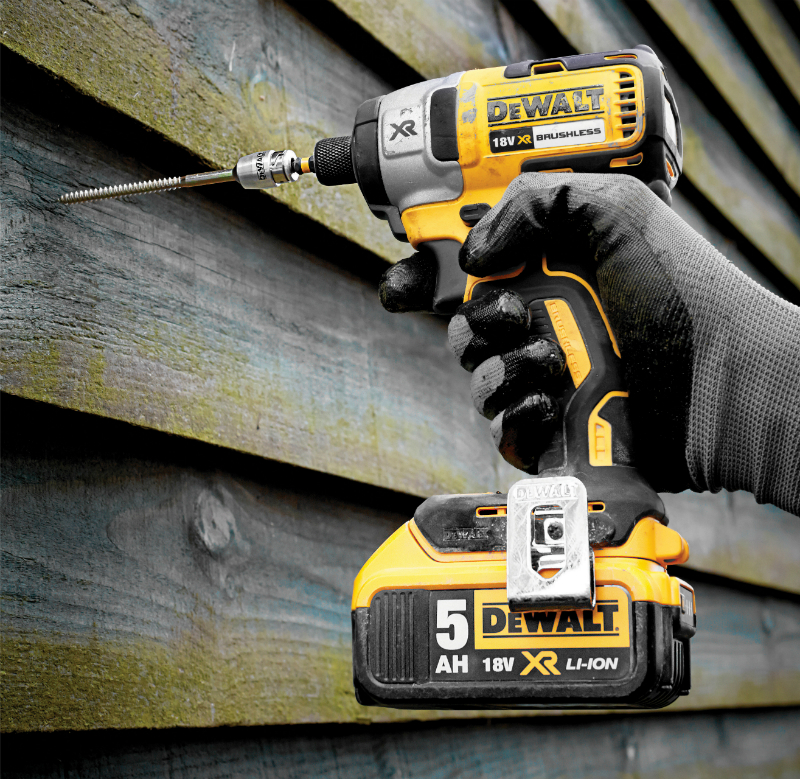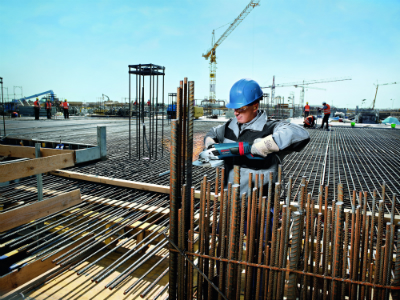Angle grinder buying guide
Angle Grinders: The 30-Second Buying Guide
| Brand | Model | Type | Price |
|---|---|---|---|
| MAKITA | DGA452Z | Angle grinder | £96 |
| MAKITA | GA4530R | Angle grinder | £58 |
| MAKITA | GA5030R | Angle grinder | £76 |
| BOSCH | GWS 9-115 S | Angle grinder | £85 |
| DEWALT | DWE4206 | Angle grinder | £66 |
Angle grinder uses:
- Cutting – metal, ceramic, masonry
- Grinding – removing excess material
- Sanding – smoothing the material
- Polishing – finishing the material
Things to consider when buying a grinder:
- Disc diameter – angle grinders with larger diameters take bigger discs that make deeper cuts
- Wattage – higher wattage gives more power to cut through denser materials
- Speed – multiple speeds give more control for precise work
- Brushless – angle grinders with brushless motors tend to last longer, have more power and increased runtime.
- Power source – 110v models are a requirement for work sites, 240v tools are designed for home use, and cordless grinders enable great manoeuvrability no matter the location
- Safety features – slow-start, anti-kickback and paddle switches are functions of angle grinders that help to prevent injury.
Grinders: The Guide From Every Angle
Key uses for angle grindersThere are four key uses for angle grinders;
- Cutting: Angle grinders can be used to make cuts in metal, ceramic and masonry. They are often used as an alternative to saws for cutting purposes, due to their manoeuvrability. Angle grinders are great at cutting material ‘in-situ’ (in its original place), which saves the hassle of moving the material to the tool for cutting.
- Grinding: As the angle grinder name suggests, the main use for the tool is to ‘grind’ materials. An angle grinder can help smooth and remove excess materials, quickly and easily. An angle grinder can grind masonry or excess metal from welds.
- Polishing: Angle grinders are also used for polishing surfaces using special polishing discs or mop attachments. The high RPM of angle grinders make them an great device for creating a polished finish on materials.
- Sanding: Whilst a traditional sander is normally the best tool to use for sanding, a grinder can also be used with sanding discs. Using a sanding disc, an angle grinder can smooth the surface of metal and masonry.
Key Considerations When Buying An Angle Grinder

Some of the key considerations when looking to purchase an angle grinder are:
Disc diameter: disc diameter is a key choice to make when selecting an angle grinder. The larger the disc the greater the cutting depth of the machine. Usually, angle grinders with bigger disc diameters are also more powerful.
Our angle grinders have disc diameters ranging in size from 4" (100mm) to 9" (230mm), with the 4.1/2" (115mm) & 9" (230mm) grinders being the most popular choices. Smaller grinders rotate the discs at a higher speed and are easier to handle. The downside of smaller grinders, however, is that they cannot cut as deep as larger angle grinders, and their discs need to be replaced more frequently as the wear rate is higher.
Wattage: higher wattage will give more power for cutting through tough materials like thick steel. If the grinder is going to be used for long periods of time, then a higher wattage is also recommended.
Speed: single speed and variable speed grinders are available. Variable speed angle grinders will enable more delicate work to be performed at lower speeds, but will usually result in an increase to the price of the machine.
Brushless grinders: brushless motors are more powerful and have fewer parts to wear out, so are worth the extra cost in a demanding environment.
Power source: angle grinders are available in mains 240v and 110v (for site work) and smaller grinders are now available in 18v cordless form. Recently, some 36v and 54v cordless angle grinders have been launched which offer a similar performance to larger, mains powered tools.
Safety features: some larger angle grinders come with slow start, where the motor slowly increases to full speed, preventing it from twisting immediately on start-up. An anti-kickback function on an angle grinder causes it to cut out if the wheel gets bound up. Restart protection prevents the grinder from starting up again if it has overheated or has cut out and been left on.
Some grinders are equipped with a paddle switch, sometimes called a Deadman’s Switch, which is a safety mechanism designed to ensure the grinder is held by two hands, and is used to stop the grinder spinning if the switch is released. These features typically add to the price, but will help to keep you safe and may also be mandatory on some building sites.
Extras: when you buy an angle grinder they quite often they will come with the grinding wheel, lock nut and a side handle. Some angle grinders can also come with grinding discs and carry cases included in the price. These grinders may be slightly more expensive than the basic model, but it will usually work out cheaper than buying everything separately.
Angle Grinder Safety

Angle grinders combine two dangerous elements together, a high RPM spinning motor with a sharp cutting disc. The following safety tips should always be considered to help avoid serious injury:
Ensure the device is switched off before you plug it in. Before plugging an angle grinder into the power source, make sure that the machine itself is switched off.
Read the manual and understand how it works. Even for an experienced user when getting a new power tool it is always a good idea to read the manual to ensure that you are completely familiar with the modes of operation and the features of the tool. Power tools are inherently dangerous machines, so this is very important.
Use the right grinding disc for the job. It is important that not only that you use the correct disc size for the angle grinder, but also that you use the right type of disc for the material. For example, using a metal cutting disc to cut ceramic and stone may at best wear the disc down too fast, but, at worse, may put you in danger by breaking the material.
Wear the right clothing and protective gear. It is always a good idea to protect yourself by wearing the appropriate safety gear when using an angle grinder. Not only can an angle grinder produce a lot of sparks, but it can also throw up cutting debris. For this reason, it is imperative to wear safety goggles. It is also a good idea to wear safety gloves. Depending on the circumstances and ventilation, it can be a good idea to wear a dust mask. This is beneficial when cutting masonry or ceramics, as in a closed environment these materials can generate a lot of dust. Using grinders in certain situations can also be quite noisy, so ear defenders may also be needed.
Use the grinder correctly. Some people remove the safety guard from the grinder, to make it easier to carry out certain jobs. This is a bad idea, the safety guard is there for a reason and should always be kept it in place. You should also always use an angle grinder with two hands, as they can twist out of your hands if you are not careful. Furthermore, you should inspect a power tool before you start a job and replace any parts before use if they are not in a good condition.
Keep your attention focused. Angle grinders are dangerous tools to use so it is important to keep focused and attentive to the job. Avoid distractions and take regular breaks.
Angle Grinder Discs
Angle grinders discs are interchangeable, which means you can select the specific size of disc for your grinder and the specific type of disc for the type of material you are looking to cut or grind. There is a wide range of different types of discs available for an angle grinder. Explore our guide to Angle Grinder discs to find out more about their uses.
View our range of Angle grinders and find the lowest prices online at Howe Tools.


